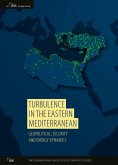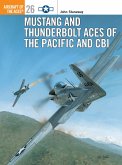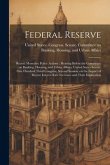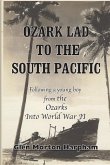The Routledge Handbook of US Foreign Policy in the Indo-Pacific
Herausgeber: Nymalm, Nicola; Aslam, Wali; Turner, Oliver
The Routledge Handbook of US Foreign Policy in the Indo-Pacific
Herausgeber: Nymalm, Nicola; Aslam, Wali; Turner, Oliver
- Broschiertes Buch
- Merkliste
- Auf die Merkliste
- Bewerten Bewerten
- Teilen
- Produkt teilen
- Produkterinnerung
- Produkterinnerung
This handbook provides a comprehensive survey of US foreign policy throughout the Indo-Pacific.
Andere Kunden interessierten sich auch für
![Alpha Alpha]() David PhilippsAlpha17,99 €
David PhilippsAlpha17,99 €![Turbulence in the Eastern Mediterranean Turbulence in the Eastern Mediterranean]() Turbulence in the Eastern Mediterranean114,99 €
Turbulence in the Eastern Mediterranean114,99 €![Mustang and Thunderbolt Aces of the Pacific and Cbi Mustang and Thunderbolt Aces of the Pacific and Cbi]() John StanawayMustang and Thunderbolt Aces of the Pacific and Cbi23,99 €
John StanawayMustang and Thunderbolt Aces of the Pacific and Cbi23,99 €![Spitfire Aces of Burma and the Pacific Spitfire Aces of Burma and the Pacific]() Andrew ThomasSpitfire Aces of Burma and the Pacific22,99 €
Andrew ThomasSpitfire Aces of Burma and the Pacific22,99 €![Federal Reserve: Recent Monetary Policy Actions: Hearing Before the Committee on Banking, Housing, and Urban Affairs, United States Sen Federal Reserve: Recent Monetary Policy Actions: Hearing Before the Committee on Banking, Housing, and Urban Affairs, United States Sen]() Federal Reserve: Recent Monetary Policy Actions: Hearing Before the Committee on Banking, Housing, and Urban Affairs, United States Sen19,99 €
Federal Reserve: Recent Monetary Policy Actions: Hearing Before the Committee on Banking, Housing, and Urban Affairs, United States Sen19,99 €![PBJ Mitchell Units of the Pacific War PBJ Mitchell Units of the Pacific War]() Jerry ScuttsPBJ Mitchell Units of the Pacific War22,99 €
Jerry ScuttsPBJ Mitchell Units of the Pacific War22,99 €![Ozark Lad to the South Pacific Ozark Lad to the South Pacific]() Glen M. HarphamOzark Lad to the South Pacific25,99 €
Glen M. HarphamOzark Lad to the South Pacific25,99 €-
-
-
This handbook provides a comprehensive survey of US foreign policy throughout the Indo-Pacific.
Hinweis: Dieser Artikel kann nur an eine deutsche Lieferadresse ausgeliefert werden.
Hinweis: Dieser Artikel kann nur an eine deutsche Lieferadresse ausgeliefert werden.
Produktdetails
- Produktdetails
- Verlag: Taylor & Francis Ltd
- Seitenzahl: 508
- Erscheinungstermin: 13. März 2025
- Englisch
- Abmessung: 246mm x 174mm
- Gewicht: 453g
- ISBN-13: 9781032396538
- ISBN-10: 1032396539
- Artikelnr.: 73143581
- Herstellerkennzeichnung
- Libri GmbH
- Europaallee 1
- 36244 Bad Hersfeld
- gpsr@libri.de
- Verlag: Taylor & Francis Ltd
- Seitenzahl: 508
- Erscheinungstermin: 13. März 2025
- Englisch
- Abmessung: 246mm x 174mm
- Gewicht: 453g
- ISBN-13: 9781032396538
- ISBN-10: 1032396539
- Artikelnr.: 73143581
- Herstellerkennzeichnung
- Libri GmbH
- Europaallee 1
- 36244 Bad Hersfeld
- gpsr@libri.de
Oliver Turner is Senior Lecturer in International Relations at the University of Edinburgh, UK. Nicola Nymalm is Assistant Professor in War Studies at the Swedish Defence University (FHS) and an Associate Research Fellow at the Swedish Institute of International Affairs (UI) in Stockholm. Wali Aslam is Reader (Associate Professor) in International Relations at the University of Bath, UK.
Introduction SECTION ONE: History of the US in the Indo-Pacific 1. The
United States in the Indo-Pacific before World War II: Trends, Strategic
Thinking, and Diplomatic Realities 2. World War Two and the Post-War 'New
Order' in the Indo-Pacific 3. US Grand Strategy in Asia SECTION TWO:
Theorising US policy and presence in the Indo-Pacific 4. 'Asian'
International Relations Theory: Theorizing Difference, Speaking Back from
the Indo-Pacific, and Alternative Imaginaries of US Indo-Pacific Policy 5.
The Racial Dimensions of US Foreign Relations in the Indo-Pacific 6. Power
and Hegemony in the Indo-Pacific: A Postcolonial View 7. West Meets East:
Constructivism and American Policy in the Indo-Pacific 8.
Poststructuralism and US Discourses of the Indo-Pacific 9. Gender and US
Foreign and Security Policy in the Indo-Pacific 10. Explaining the US
presence in the Indo-Pacific: Marxist-Gramscian-Kautskyian approaches 11.
Realist Theories and US Foreign Policy in the Indo-Pacific 12. The Liberal
Paradigm and U.S. Policy in the Indo-Pacific SECTION THREE: The US and
Indo-Pacific states and institutions 13. US foreign policy towards China
14. The US, Japan, and the Indo-Pacific 15. The US and North Korea: The
Nuclear Problem that Refuses to Go Away 16. Alliance asymmetries and the
challenges of balancing security and democracy: US relations with the
Republic of Korea 17. The United States and Taiwan: Foundations and
challenges of the One China Policy 18. The Philippines in the United
States' Indo-Pacific Grand Strategies: From Strategic Rebalancing to
Strategic Competition 19. Less is More: US Engagement with Indonesia
(1945-2021) 20. US-Myanmar/Burma Policy 21. US relations with Sri Lanka:
A Case of Impulsiveness, Missed Opportunities and Strategic Competition
22. The Evolution of American Foreign Policy Toward India 23. Misaligned
expectations and broken promises: United States foreign policy approach
towards Pakistan (1947-2021) 24. US Engagement with Australia: 'No better
friend'? 25. The United States and ASEAN: Bilateralism and Regionalism in
a Changing Asia SECTION FOUR: The US and Indo-Pacific issues 26. The
Pursuit of Primacy: US Security Policy in Indo-Pacific 27. US regional
economic policy in the Indo-Pacific 28. Congress, Domestic Politics and
Contemporary US Policy in the Indo-Pacific 29. US Nuclear Strategy in the
Indo-Pacific (1945-2021) 30. The Role of Democracy and Human Rights in U.S.
Indo-Pacific Policy (1945-2021) 31. US concerns regarding the Belt and
Road Initiative 32. US Cyber Strategy in the Indo-Pacific 33. The US,
Indo-Pacific, AI and Emerging Security Technologies
United States in the Indo-Pacific before World War II: Trends, Strategic
Thinking, and Diplomatic Realities 2. World War Two and the Post-War 'New
Order' in the Indo-Pacific 3. US Grand Strategy in Asia SECTION TWO:
Theorising US policy and presence in the Indo-Pacific 4. 'Asian'
International Relations Theory: Theorizing Difference, Speaking Back from
the Indo-Pacific, and Alternative Imaginaries of US Indo-Pacific Policy 5.
The Racial Dimensions of US Foreign Relations in the Indo-Pacific 6. Power
and Hegemony in the Indo-Pacific: A Postcolonial View 7. West Meets East:
Constructivism and American Policy in the Indo-Pacific 8.
Poststructuralism and US Discourses of the Indo-Pacific 9. Gender and US
Foreign and Security Policy in the Indo-Pacific 10. Explaining the US
presence in the Indo-Pacific: Marxist-Gramscian-Kautskyian approaches 11.
Realist Theories and US Foreign Policy in the Indo-Pacific 12. The Liberal
Paradigm and U.S. Policy in the Indo-Pacific SECTION THREE: The US and
Indo-Pacific states and institutions 13. US foreign policy towards China
14. The US, Japan, and the Indo-Pacific 15. The US and North Korea: The
Nuclear Problem that Refuses to Go Away 16. Alliance asymmetries and the
challenges of balancing security and democracy: US relations with the
Republic of Korea 17. The United States and Taiwan: Foundations and
challenges of the One China Policy 18. The Philippines in the United
States' Indo-Pacific Grand Strategies: From Strategic Rebalancing to
Strategic Competition 19. Less is More: US Engagement with Indonesia
(1945-2021) 20. US-Myanmar/Burma Policy 21. US relations with Sri Lanka:
A Case of Impulsiveness, Missed Opportunities and Strategic Competition
22. The Evolution of American Foreign Policy Toward India 23. Misaligned
expectations and broken promises: United States foreign policy approach
towards Pakistan (1947-2021) 24. US Engagement with Australia: 'No better
friend'? 25. The United States and ASEAN: Bilateralism and Regionalism in
a Changing Asia SECTION FOUR: The US and Indo-Pacific issues 26. The
Pursuit of Primacy: US Security Policy in Indo-Pacific 27. US regional
economic policy in the Indo-Pacific 28. Congress, Domestic Politics and
Contemporary US Policy in the Indo-Pacific 29. US Nuclear Strategy in the
Indo-Pacific (1945-2021) 30. The Role of Democracy and Human Rights in U.S.
Indo-Pacific Policy (1945-2021) 31. US concerns regarding the Belt and
Road Initiative 32. US Cyber Strategy in the Indo-Pacific 33. The US,
Indo-Pacific, AI and Emerging Security Technologies
Introduction SECTION ONE: History of the US in the Indo-Pacific 1. The
United States in the Indo-Pacific before World War II: Trends, Strategic
Thinking, and Diplomatic Realities 2. World War Two and the Post-War 'New
Order' in the Indo-Pacific 3. US Grand Strategy in Asia SECTION TWO:
Theorising US policy and presence in the Indo-Pacific 4. 'Asian'
International Relations Theory: Theorizing Difference, Speaking Back from
the Indo-Pacific, and Alternative Imaginaries of US Indo-Pacific Policy 5.
The Racial Dimensions of US Foreign Relations in the Indo-Pacific 6. Power
and Hegemony in the Indo-Pacific: A Postcolonial View 7. West Meets East:
Constructivism and American Policy in the Indo-Pacific 8.
Poststructuralism and US Discourses of the Indo-Pacific 9. Gender and US
Foreign and Security Policy in the Indo-Pacific 10. Explaining the US
presence in the Indo-Pacific: Marxist-Gramscian-Kautskyian approaches 11.
Realist Theories and US Foreign Policy in the Indo-Pacific 12. The Liberal
Paradigm and U.S. Policy in the Indo-Pacific SECTION THREE: The US and
Indo-Pacific states and institutions 13. US foreign policy towards China
14. The US, Japan, and the Indo-Pacific 15. The US and North Korea: The
Nuclear Problem that Refuses to Go Away 16. Alliance asymmetries and the
challenges of balancing security and democracy: US relations with the
Republic of Korea 17. The United States and Taiwan: Foundations and
challenges of the One China Policy 18. The Philippines in the United
States' Indo-Pacific Grand Strategies: From Strategic Rebalancing to
Strategic Competition 19. Less is More: US Engagement with Indonesia
(1945-2021) 20. US-Myanmar/Burma Policy 21. US relations with Sri Lanka:
A Case of Impulsiveness, Missed Opportunities and Strategic Competition
22. The Evolution of American Foreign Policy Toward India 23. Misaligned
expectations and broken promises: United States foreign policy approach
towards Pakistan (1947-2021) 24. US Engagement with Australia: 'No better
friend'? 25. The United States and ASEAN: Bilateralism and Regionalism in
a Changing Asia SECTION FOUR: The US and Indo-Pacific issues 26. The
Pursuit of Primacy: US Security Policy in Indo-Pacific 27. US regional
economic policy in the Indo-Pacific 28. Congress, Domestic Politics and
Contemporary US Policy in the Indo-Pacific 29. US Nuclear Strategy in the
Indo-Pacific (1945-2021) 30. The Role of Democracy and Human Rights in U.S.
Indo-Pacific Policy (1945-2021) 31. US concerns regarding the Belt and
Road Initiative 32. US Cyber Strategy in the Indo-Pacific 33. The US,
Indo-Pacific, AI and Emerging Security Technologies
United States in the Indo-Pacific before World War II: Trends, Strategic
Thinking, and Diplomatic Realities 2. World War Two and the Post-War 'New
Order' in the Indo-Pacific 3. US Grand Strategy in Asia SECTION TWO:
Theorising US policy and presence in the Indo-Pacific 4. 'Asian'
International Relations Theory: Theorizing Difference, Speaking Back from
the Indo-Pacific, and Alternative Imaginaries of US Indo-Pacific Policy 5.
The Racial Dimensions of US Foreign Relations in the Indo-Pacific 6. Power
and Hegemony in the Indo-Pacific: A Postcolonial View 7. West Meets East:
Constructivism and American Policy in the Indo-Pacific 8.
Poststructuralism and US Discourses of the Indo-Pacific 9. Gender and US
Foreign and Security Policy in the Indo-Pacific 10. Explaining the US
presence in the Indo-Pacific: Marxist-Gramscian-Kautskyian approaches 11.
Realist Theories and US Foreign Policy in the Indo-Pacific 12. The Liberal
Paradigm and U.S. Policy in the Indo-Pacific SECTION THREE: The US and
Indo-Pacific states and institutions 13. US foreign policy towards China
14. The US, Japan, and the Indo-Pacific 15. The US and North Korea: The
Nuclear Problem that Refuses to Go Away 16. Alliance asymmetries and the
challenges of balancing security and democracy: US relations with the
Republic of Korea 17. The United States and Taiwan: Foundations and
challenges of the One China Policy 18. The Philippines in the United
States' Indo-Pacific Grand Strategies: From Strategic Rebalancing to
Strategic Competition 19. Less is More: US Engagement with Indonesia
(1945-2021) 20. US-Myanmar/Burma Policy 21. US relations with Sri Lanka:
A Case of Impulsiveness, Missed Opportunities and Strategic Competition
22. The Evolution of American Foreign Policy Toward India 23. Misaligned
expectations and broken promises: United States foreign policy approach
towards Pakistan (1947-2021) 24. US Engagement with Australia: 'No better
friend'? 25. The United States and ASEAN: Bilateralism and Regionalism in
a Changing Asia SECTION FOUR: The US and Indo-Pacific issues 26. The
Pursuit of Primacy: US Security Policy in Indo-Pacific 27. US regional
economic policy in the Indo-Pacific 28. Congress, Domestic Politics and
Contemporary US Policy in the Indo-Pacific 29. US Nuclear Strategy in the
Indo-Pacific (1945-2021) 30. The Role of Democracy and Human Rights in U.S.
Indo-Pacific Policy (1945-2021) 31. US concerns regarding the Belt and
Road Initiative 32. US Cyber Strategy in the Indo-Pacific 33. The US,
Indo-Pacific, AI and Emerging Security Technologies








